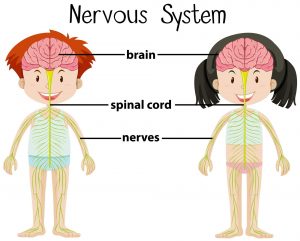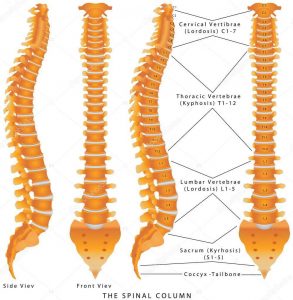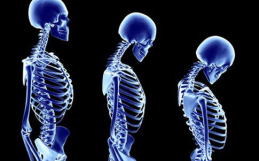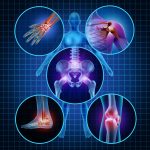“Motion is life.” – Hippocrates
“It is a shame for a man to grow old without seeing the beauty and strength of which his body is capable.” – Socrates
These quotes are a powerful indication that even before science was able to study the body in depth, it was a well-recognized fact of life that humans were born to move.
Another quote that comes to mind is “If you don’t use it, you lose it.” This may sound extremely cliché, but when it comes to the human body and having the capacity to move, it is 100% applicable.
Disease of Disuse
 Many diseases or injuries that occur, especially as we age, are highly preventable and the symptoms are somewhat reversible. The human body is highly plastic (changeable) and responds to inputs that we give it.
Many diseases or injuries that occur, especially as we age, are highly preventable and the symptoms are somewhat reversible. The human body is highly plastic (changeable) and responds to inputs that we give it.
Just like if we continuously stretch we can improve range of motion and if we lift weights we can increase muscular strength, the opposite is also true. By remaining stagnant throughout the day and never moving, we are essentially giving our body the signal that it is okay to cast itself into the shapes it is constantly being put in.
Remember that our body doesn’t think for itself, it only responds to the inputs we give it. So by always sitting, hunched over on a computer, on our phones, etc. we are telling our body to let our hips close, round our spines, droop our shoulders forward, and so forth.
As we continually enforce these patterns, it is not just our muscles that adapt to these postures, but also our joints. This is what can lead to osteoarthritis, stiffening, and the degradation of our joints, and this is what will severely limit us as we age. These problems are often seen as diseases of age, when, in fact, they can more accurately be thought of as diseases of disuse.
The only thing required to improve healing, prevent stiffening of joint and muscles, and feel better in your own body as you age is movement!
Spinal Hygiene
 I have introduced the concept of spinal hygiene in my practice, as a fine example of this. Similar to the concept of dental hygiene, where a daily practice of prevention including brushing, flossing, and biannual visits to a specialist to check your status, spinal hygiene includes a daily practice and scheduled check-ups.
I have introduced the concept of spinal hygiene in my practice, as a fine example of this. Similar to the concept of dental hygiene, where a daily practice of prevention including brushing, flossing, and biannual visits to a specialist to check your status, spinal hygiene includes a daily practice and scheduled check-ups.
Once upon a time, dentistry was only in the business of tooth extraction when the tooth pain was no longer tolerated. It was crisis care at its finest. Then dental researchers discovered that food particles trapped in the teeth would feed bacteria in the mouth. This bacteria would release an enzyme that would break down the tooth and create a cavity.
This knowledge commenced the profession of dental hygiene. The dental hygienist taught patients how to prevent cavities, by cleaning their teeth more intensely and having a dentist check the teeth on a regular basis. The dentist would only be available for more serious intervention when needed. This was the advent of modern preventative dentistry. Dentistry still stands today as the largest preventative healthcare profession in the world.
Three Irrefutable Concepts
 With this same spirit of prevention, spinal hygiene is a way to apply our basic knowledge of the spine and nervous system. It is not a secret that those of us who take care of the spine and nervous system do not always agree on everything we do in our practices. Despite this, there are three irrefutable concepts with respect to avoiding ‘cavities’ in the spine or spinal degeneration and ensuring optimal spinal health for the rest of our lives:
With this same spirit of prevention, spinal hygiene is a way to apply our basic knowledge of the spine and nervous system. It is not a secret that those of us who take care of the spine and nervous system do not always agree on everything we do in our practices. Despite this, there are three irrefutable concepts with respect to avoiding ‘cavities’ in the spine or spinal degeneration and ensuring optimal spinal health for the rest of our lives:
- The spine was designed to be aligned straight from the front, and have three natural curves from the side.
- The spine was designed to move freely with ideal ranges of motion in three planes.
- A spine that has supportive structures (muscles, discs, tendons, and ligaments) that have endurance and strength.
Note: The role of the 24 moveable spinal bones is to protect the spinal cord, which is responsible for the information coming to and from the brain to rest of the body.
If these three are maintained, then spinal degeneration can be avoided. If the spine degenerates, the result is that the communication between the brain and the body via the spinal cord and nerves will be negatively affected.
To optimize your potential and continue to perform at your highest level, everyone should have someone on their healthcare team that is able to teach them how to keep their spine and nervous system healthy and to check the spine and nervous system following a planned schedule of care. Make sure you talk to me about embarking on spinal hygiene.
Practice Plan for Body Movement
Movement of the entire body is essential. Here is a practical plan to follow that can help you retain, and even improve, ranges of motion as well as prevent the degradation of our bodies that often occurs as we age.
If you have absolutely no other time in your day, take at least three 5-minute chunks (one when you wake up, one at lunchtime, one before bed) to move your body and joints. Make up your own “five minutes of movement”.
It doesn’t matter what you are doing, as long as you try to stay continuously moving. If you have more time than that, then feel free to use more. When it comes to movement, more is most definitely better. You don’t have to perform everything all the time, but any amount of movement will have benefits.
Here are some ideas for movements that you could perform (avoid if any pain is present while doing the movement and inform your health care provider):
- Move all joints in slow controlled and pain-free circles. Think about moving in the widest range of motion possible, starting at the top and moving down: neck, shoulders/scapula, arms, elbows, wrists, back, hips, knees, and ankles. (Ask for help if you need direction on this.)
- While brushing your teeth, move your spine through the three planes that comprise your range of motion and hold at the end of the range that is pain-free for 10 seconds. Takes 2 minutes to move your entire spine. (Ask me to review.)
- Do squats/lunges throughout your day.
- If possible, use an unweighted/air deep squat as a resting position.
- Cat/Camel – moving the spine daily can be very synergistic with your chiropractic care at preventing spinal arthritis. It may even allow you to see the chiropractor less!
- If you have somewhere to hang, this can be extremely beneficial in improving your overhead reaching range of motion and fixing frozen shoulders.
- Pretty much any stretch you can think of – moving from one to the next every five or so seconds. “The best position is the next position.”
More Strategies for Movement
There are also many strategies you can employ at work to avoid being stuck in the commonly seen shapes:
- Stand up desk/treadmill desk – a good start, but often not the best solution. Not an argument of standing vs. sitting, more of preventing stagnation. Remember that “the best position is your next position” and try to sit less and stand more (standing is not the solution, it simply that when we stand we are more likely to move). Learn why ergonomic chairs are not the best idea here.
- If your job requires you to be constantly typing, take a break every so often to stretch your wrists and forearms. Even 10 gentle circles in each direction can make a big difference.
- Stretch calves on a rolled up towel or half of a foam roller.
- Avoid wearing shoes when possible, for extra foot stimulation stand on an acupressure mat or roll the foot with any small ball. Our feet are made to be extremely sensitive sensory organs! Always wearing shoes can dampen this ability. Learn why.
- Take a few seconds every hour or half hour to do a few air squats/lunges.
- Use a tall stool or the top of your desk to stretch hamstrings with a straight leg stretch or glutes using a standing pigeon.
- Take a break every hour to walk a few laps around the building and get your blood moving.
- Perform 5 sets of 10 seconds of “chin tuck/head back” every hour. Squeeze shoulder blades back and down, while simultaneously tucking your chin and pulling your head back like you are pushing into a car headrest. (You can do this while driving too!). Ask me about using a band to perform these chin tucks. For banded chin tuck exercises, you should hold for 10 seconds and repeat 3 times. The lower part of your neck is the most likely to degenerate often due to forward head posture.
- Sitting, use a wobble/balance disc for 5 minutes, and take your spine through circular and figure of eight movements. The last segment of your low back is most likely to degenerate due to our sitting-centric lifestyle.
- Take ‘walk and talk’ meetings.
For more ideas on movement and spinal hygiene, contact me and I’ll help you get started.
References:
- Hawley, Bryan. “Joint Motion and Motion Therapy.” Dynamic Chiropractic 26 Aug. 2010. Academic OneFile. Web. 24 Mar. 2016.
- Daily Shoulder Mobility Exercises (Dr Andreo Spina, FRC)
- Move Your DNA, by Katy Bowman
- Simple Shoulder Solution, by Max Shank
- Shoulder Pain? The Solution & Prevention, by Dr. John Kirsch
- Ido Portal’s views on movement













